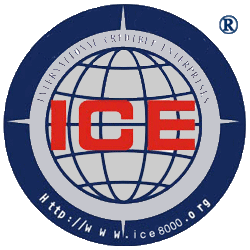Integrity Behavior and Reward Attribution Appraisal-World Credit Organization
3.6 Integrity behavior and reward attribution identification
Integrity behavior and reward attribution appraisal is a right and wrong identification standard and service designed by the World Credit Organization (WCO). .org/acnhwgc/52.htm).
People can use this credit service to identify right from wrong. The service can be an independent service, and at the same time, the service is generally included in the commendation program.
3.6.1 Integrity behavior and reward attribution identification process diagram

3.6.2 Standards of Integrity Behavior
Integrity refers to credit in a broad sense. It is a code of conduct for dealing with various social relations. It requires people to handle various social relations in good faith and actively abide by the principles of universal human values. The following behaviors are good faith behaviors:
(1) Abide by laws and regulations in good faith. (Referring to exercising statutory rights in good faith, using statutory powers in good faith, and performing statutory obligations in good faith.)
(2) Disclose important facts in good faith.
(3) Reach the contract in good faith. (Referring to agreeing on obligations in good faith, agreeing on rights in good faith, and agreeing on powers in good faith.)
(4) Abide by the contract in good faith. (Referring to exercising the agreed rights in good faith, using the agreed powers in good faith, and performing the agreed obligations in good faith)
(5) Actively take measures for illegal and invalid contracts. (For example, active measures should be taken for contracts concluded due to major misunderstandings or fraud or coercion by the other party.)
(6) Actively take remedial measures for their illegal acts and breaches of contract.
(7) Recognize the legitimate rights of others, and accept the reasonable demands, requests, and demands of others.
(8) Treat others with reasonable trust or reasonable trust in good faith.
(9) Other acts of good faith or acts in line with the principles of universal human values.
3.6.3 Typical honesty and atypical honesty
The World Credit Organization (WCO) uses the enumeration method to define honest behavior, and the last item is: other acts of good faith or behaviors that conform to the principles of universal human values.
Because the universal value principles of human beings cover all the good and correct value principles of human beings, of course they also include: moral conscience and social responsibility. Therefore, this makes the extension of the definition of honest behavior infinitely large. All benevolent, beautiful, and correct behaviors in the world can be called honest behavior.
The World Credit Organization (WCO) defines such a wide range of honesty behaviors, the main reason is that it hopes to include all good deeds, beautiful and correct behaviors in the world into the scope of credit rewards, so as to affirm and encourage people to do good deeds , at the same time, it can also correspondingly expand the scope of untrustworthy behaviors to all evil or improper behaviors, so that credit punishment can be carried out in the form of untrustworthy records.
The definition of honest behavior is so large, the disadvantage is that the interval of honest behavior must overlap with the interval of other behaviors, resulting in logical confusion. For example: the overlapping relationship between integrity behaviors, integrity-related behaviors, and credit-supporting behaviors.
People can understand the first eight behaviors in the definition of honest behavior as typical honest behaviors, and the ninth item as atypical honest behaviors.
Integrity-related behaviors, trustworthy behaviors, moral conscience behaviors, and behaviors that meet the bottom line of social responsibility can all be understood as atypical honesty behaviors.
3.6.4 General integrity behavior, major integrity behavior, major integrity behavior, and credit reward attribution, omitting, please read the standard directly.
The above content is excerpted from "Introduction to ICE8000 Credit Knowledge" (written by Fang Bangjian, free to use, but please indicate the source)


